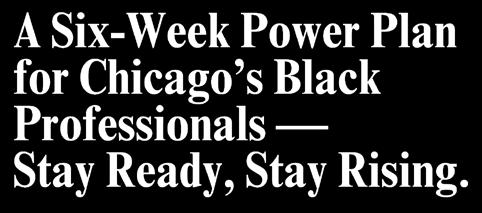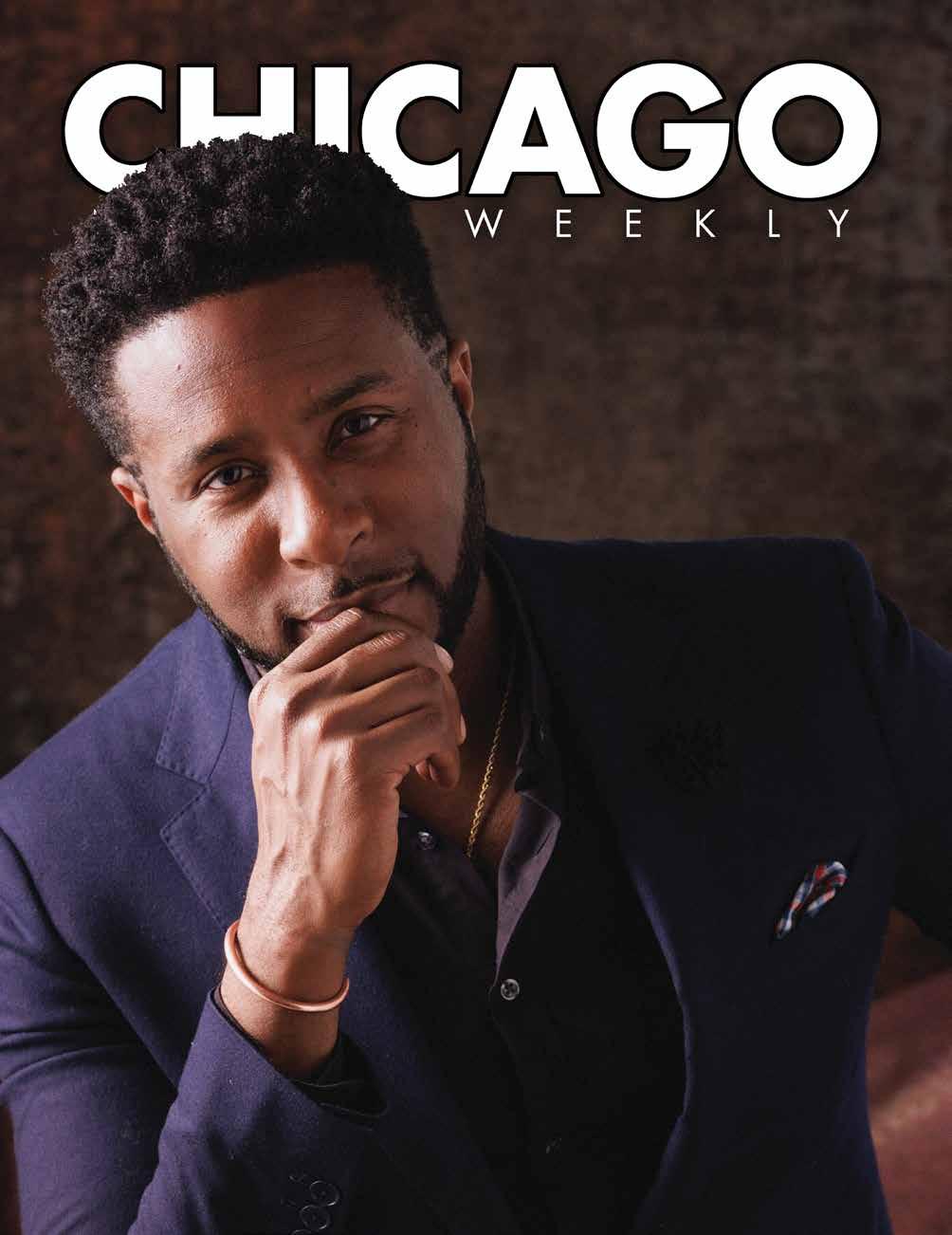

Refuses to Forget What Xavier Ramey
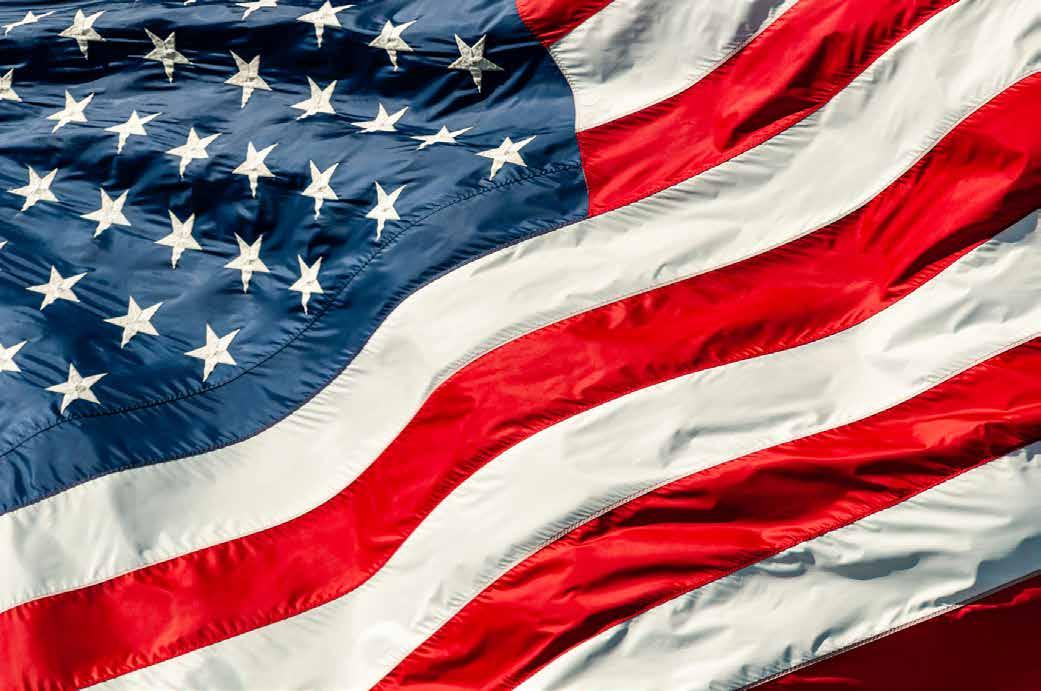
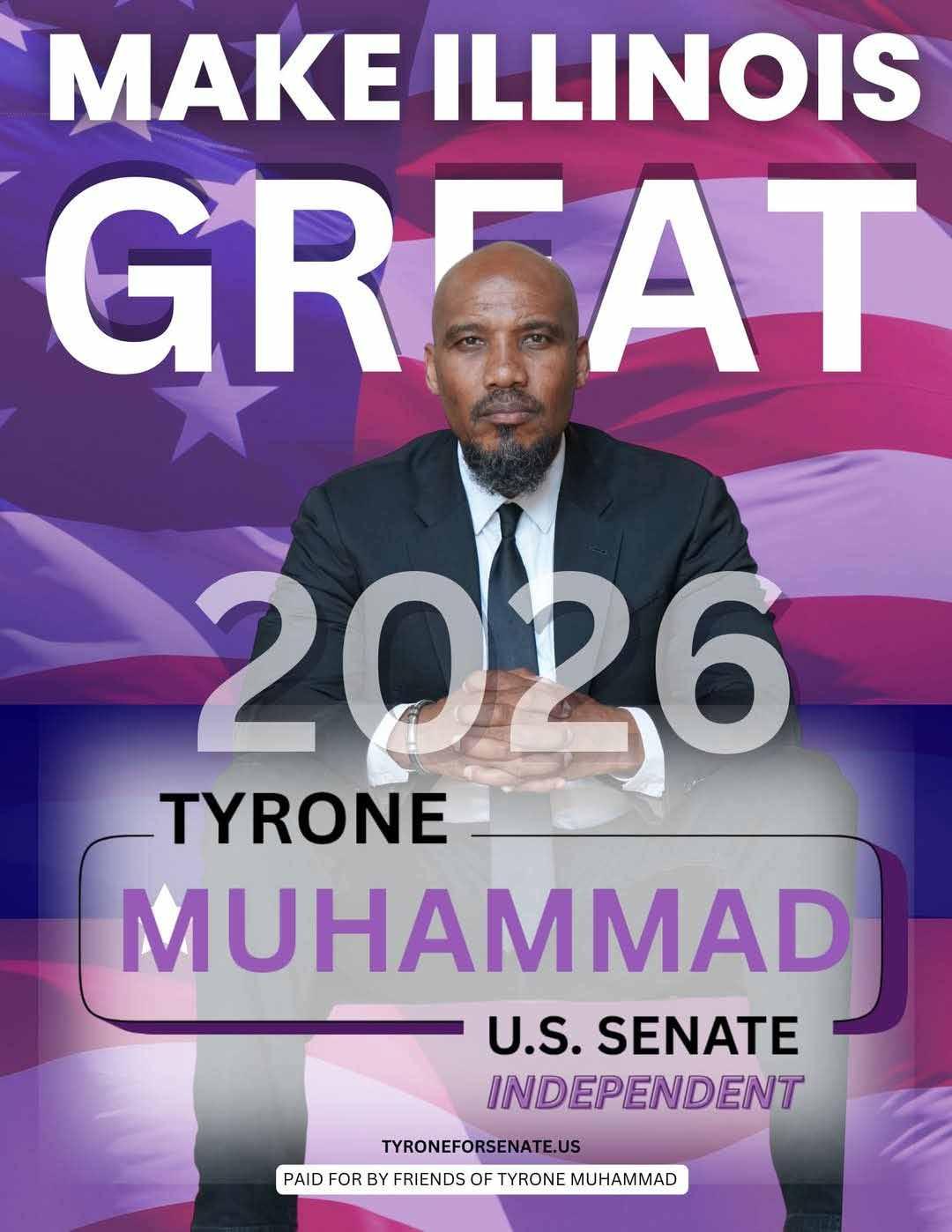


Cheryl Mainor Norman CEO & Publisher
Kai EL’ Zabar
Editor-In-Chief
Laura Miller Managing Editor
Paul Mainor
Art Director
Max Blaisdell Copy Editor
Staff Writers
CL Blackburn
Zada Johnson
Dr. Mila K. Marshall
Wanda Wright
Malachi Webster
Columnists
Dr. Sanja Rickette Stinson
David Seaton
Contributors
NNPA Newswire
Mare Evans
Melanie Mainor
Ken Hare
Cover Photo Courtesy of Xavier Ramey
Advertising Representation
Chicago Media Partners
Michael Tolliver (708)268-5518
Kenard Karter
Kevin Ross
Chicago News Weekly 2150 S. Canalport Ave. Suite 4-C14 Chicago, IL 60608 312. 877. 5151 Vol. 3 No 8 Thursday, May 29, 2025
Chicago News Weekly is published weekly on Thursday. www.cnwmedia.com advertising@cnwmedia.com editorial@cnwmedia.com
Subscription $104 year


E notes
Keeping Your Energy Safe and Sacred
Keeping our energy strong and pure throughout the day is vital to someone that is sensitive.
Have you been told, “You’re so sensitive,” like it’s a bad thing? Well, being a sensitive person in this world can at times feel like more of a burden than a gift. However, like many things, it really is about your attitude and understanding of your sensitivity. Don’t let it feel draining just because you are incredibly receptive to the energy of others and the environment around us. And because you are, you must take care of yourself to sustain and maintain your strength and vitality. You must be master of yourself and maintain stability and clarity.
We can’t have people thinking you’re crazy—which they often do when they don’t understand your peculiarities. No matter our gift, which at times may seem to drain us, we still want to be part of the group phenomenon. Meaning, we like to gather and commune with others, whether as a small or large group of people. We like to party! We enjoy people, we care about people, and we would like to enjoy being with them without becoming overwhelmed or exhausted.
The Night I Trusted My Gut
I recall a particular weekend as a teenager hanging with my girls. I drove that night. We arrived at the party, where everyone would be, and we were so excited to walk into the venue when I said, “We can’t go in, something’s wrong.”
Of course, they looked at me as if I were crazy. Had I not just been engaged in the same excitable conversation with them? Had I not exclaimed enthusiasm? The answer? Indeed, I had. But as we approached the big wooden doors, an ominous haunting shrouded me, and
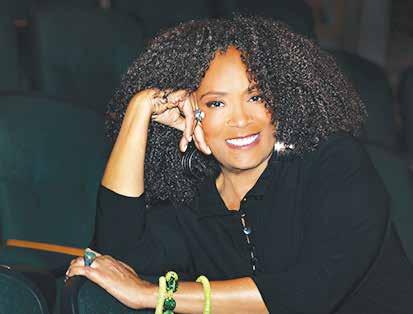
I repeated, “We can’t go in. I’m telling you, something’s wrong.”
We had been through this before— when I got feelings—so as much as they hated to acquiesce to my feeling, they did. We turned around and walked away. That evening, one of the most popular boys—a star athlete in our city—was shot by some jealous rival.
My friends asked me numerous times, “How do you do that? How do you know?”
Here’s what I do know: I listen to my intuitive intelligence because it has proven itself invaluable. It has saved my life on several occasions and certainly prohibited me from being involved in situations that could have impacted my life in a way in which I did not want to experience.
So being sensitive is alright with me. I had to learn how to handle it because it also alerted me to people revealing who they are. I often used to say to my ex-husband, “I don’t like him/her,” and he’d say, “Kai, you don’t like anybody.”
Of course, that wasn’t true. Still, I’d respond, “I don’t know him/her, I’m just saying I feel something from them that doesn’t feel right.” And that’s how it works for me.
My intuition has not been wrong. And I have not always listened. And I have experienced the consequences. So, I listen. I am informed by feeling, dreams, and visions—all of which reveal information for me to use.
It’s important to learn how to manage your gift. It needs to be attended to for your overall well-being. In other words, you must familiarize yourself with the real thing or your emotional reaction to something. You will, in time, be able to distinguish one from the other if you allow the spirit within to speak to you. How it speaks to me is what I’m comfortable with, so I suggest that you pay attention to how your intuition conveys itself to you.
Tuning In to the Voice Within
Recognizing that your intuitive intellect is real is the first step toward being in tune with your inner voice. Once you do that, you should create opportunities for you to put your gift to the test. Make it so it’s comfortable for you to do so. Perhaps you begin with a small gathering of people—some you know and a few that you don’t. That way, you can leave if you become overwhelmed with feelings and feel uncomfortable.
The more you practice managing your sensitivity to others, the more grounded in your intuitive intelligence you become.
You will begin to feel centered and safe, which is the key in establishing trust in your inner voice. I have shared what I do, but you must create and establish your own practice. For me, it’s a sense of aligning myself with the Most High God and trusting the guidance from within.
Once you move on faith, you can begin entertaining comfortably in your home and socializing in the world without running the risk of losing yourself in someone else’s energy, the energy surrounding you, or giving your energy away. You must always wrap yourself in love, which is the greatest protection we can walk in. All this takes is a little time and practice, and the result—being part of social events without ending up depleted—is well worth the effort. Being grounded in knowing that what you know is what you know, and feeling empowered and grounded, is a far better stance than fear and feeling depleted.
First, I acknowledge that the information provided to me is divine in source and always ask, “What am I to learn or gain from this information?” In silence, stillness, or in motion, I ask this.
The whole purpose of this self-care ritual is to help keep yourself strong energetically when you are in a situation
Kai EL’ Zabar Editor-in-Chief
photo credit: Dot Ward
THE BOOK OF DAVID
Compete or Fall Behind Why DEI Can’t Replace Talent
As a corporate leader constantly searching for the best talent, I have one simple requirement for prospective employees: be great at what you do. I don’t care about your background, race, gender, or what college you attended. I care about whether you can solve problems, build value, and help my company grow.
Unfortunately, the rise—and now, the quiet retreat—of DEI programs across corporate America has exposed an uncomfortable truth: we’ve allowed symbolic diversity to replace substantive excellence.
The argument often heard from Black advocacy groups goes like this: Black Americans represent $1.7 trillion in annual consumer spending. With nearly 40 million Black citizens contributing this
much to the economy, corporations owe them jobs, investment, and opportunity. It’s a compelling soundbite—until you look at the facts.
Latino Americans spend $2.4 trillion a year—far more than Black Americans— because there are more of them: 64.2 million. White Americans spend $12.2 trillion annually—again, due to sheer numbers: 212 million people. That logic makes sense.
But here’s where the argument collapses: Asian Americans. Only 19.36 million strong—less than half the Black population—but they spend the same amount: $1.7 trillion. What explains this? Discipline, education, entrepreneurship, and family structures focused on achievement. No one’s handing out favors to Asian Americans; they are competing— and winning.
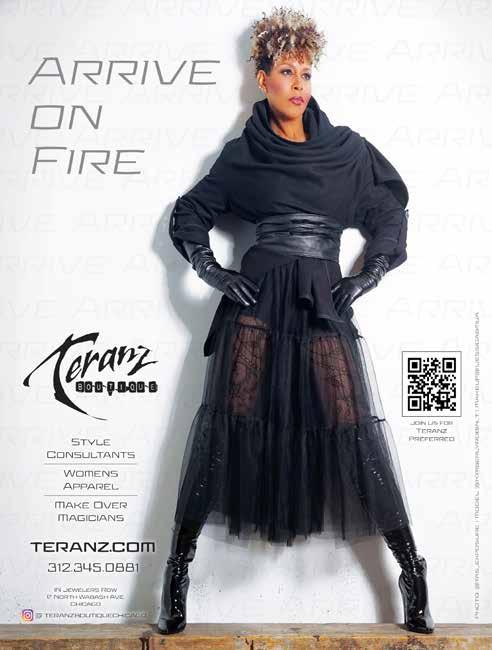
So if we are to build a merit-based workforce, we cannot measure value by how much a group spends. Spending is consumption, not production. Corporations do not survive by rewarding consumption—they thrive by rewarding contribution. You don’t get hired because your demographic buys shampoo or sneakers. You get hired because you can sell them, market them, or innovate them better than the next candidate.
This is the fatal flaw of DEI policies: they often prioritize optics over output. They were introduced as corrective measures to historical exclusion, but in practice, many of these initiatives have become bureaucratic exercises in quotas, tokenism, and lowered expectations. What gets lost? Excellence. What gets sacrificed? Results. Let me be clear: I don’t care if a can-
u E NOTES, Continued from page 3
that could potentially be draining. For example, if you are having a party, you might take some time to prepare beforehand. Just as you spend time cleaning your home and preparing food, it is essential to prepare your inner home for the event. This can be as simple as taking a mindful walk, a cleansing bath, or engaging in any other activity that gives you energy.
You can even sit alone for a set duration of time, tuning in to your energy and connecting to yourself so that you are less easily carried away by the energy outside of yourself. You may employ a mantra such as, “I am centered and safe in the home of myself.” You can also charge a crystal, gemstone, or any piece of jewelry with protective energy and wear it or carry it with you. This can be
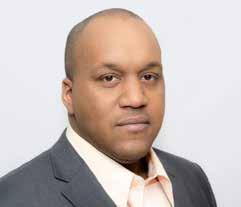
didate is Black, Brown, White, Asian, or anything else. I care if you can make the company $1 million—or save it $1 million. That’s the scoreboard in corporate America. It’s brutal. It’s unrelenting. But it’s fair. The market rewards performance—not protest.
I’m not interested in hearing who’s owed what. I’m interested in hiring people who can compete. Not because they are twice as good—but because they are good enough. Because they can do the job. Because they want to win.
If you want to see more Black Americans in leadership, in tech, in finance, in corporate boardrooms, here’s the formula: out-learn, out-work, out-perform. Stop complaining. Stop waiting for a handout. And stop pretending DEI is a substitute for effort. It never was. Compete. Or fall behind.
helpful during the event—just seeing it or touching it can remind you that you are centered and safe!
And if you do get a bit queasy, be aware at all times that it is perfectly acceptable to excuse yourself for a bathroom break or to step outside for a moment to regroup and release the energy that may have engulfed you. We all do it differently. I say the Lord’s Prayer and ask for guidance. But you are you, so do you. Whatever you choose as your centering method should give you the time and space you need to check in with yourself and correct any energetic imbalances you detect. It doesn’t matter where you are in the world—at home or out in the world—taking care of yourself in this way enables you to keep your energy strong, centered, and feeling safe, even as you open yourself to others.

Matthew House Closes Its Doors After 35 Years of Serving Chicago’s Homeless
CNW Staff Report Managing Editor
After more than three decades of service on the South Side of Chicago, Matthew House—a vital lifeline for the city’s homeless population—has closed its doors. Founded by three African American veterans and led by Dr. Sanja Stinson, the organization provided consistent, compassionate care to thousands of people experiencing homelessness since opening in the early 1990s.
On any given day, Matthew House served 60 to 80 individuals, offering hot meals, showers, daytime shelter, case management, and access to essential resources such as SNAP benefits and veteran services. Many who once relied on the center eventually returned to mentor and support new clients, creating a powerful cycle of healing and giving back.
The closure, according to Dr. Stinson,
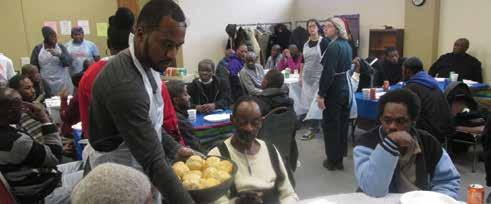
was the result of a significant financial disruption. “There’s no other place for them to go except a place that’s on Halsted,” she said. “We were the only people in Bronzeville, and it left a void for individuals who are experiencing homelessness… and that void has not been filled by anyone.”
Reflecting on its impact, Clover Mc-
Crary said, “The news that Matthew House has closed is sad because of the great work it has done over the past 35 years. The vision of Dr. Stinson’s father has made a difference in the lives of so many—not just those in need, but also those who served the clients at Matthew House.”
The organization was rooted in a deep-
ly personal mission. Dr. Stinson led the nonprofit based on the vision of her late father, whose commitment to community upliftment left a lasting legacy. Over more than 35 years, thousands of individuals were fed, sheltered, and supported. Services went beyond emergency needs to include housing retention, job placement, mental health support, and more.
With the doors now closed, all operations have ceased—including veteran support, case management, and permanent supportive housing. To reopen, Matthew House urgently needs to raise $200,000. Supporters are encouraged to donate at mhchicago.org.
Dr. Stinson offered a final reflection: “Homelessness is a temporary situation that individuals are experiencing. It’s not who they are.”

Ramirez-Franco
Many Chicagoans likely to wait decades for dangerous lead pipes to be replaced
The city with the most lead service lines in the country doesn’t plan to finish replacing them until 2076.
This story is a partnership between WBEZ, Grist and Inside Climate News.
Growing up in Chicago, Chakena D. Perry knew not to trust the water coming out of her tap.
“It was just one of these unspoken truths within households like mine — low-income, Black households — that there was some sort of distrust with the water,” said Perry, who later learned Chicago is the city with the most lead service lines in the country. “No one really talked about it, but we never used our tap for just regular drinking.”
Now a senior policy advocate for the environmental group Natural Resources Defense Council,Perry is part of a coalition that fought for stricter rules to force cities like Chicago to remove their toxic lead pipes faster.
Last year, advocates celebrated a big win: The Biden-era U.S. Environmental Protection Agency mandated that all water systems across the country begin replacing their lead service lines by 2027. Under the new rule, Chicago would have about 20 years to replace its estimated 412,000 lead service lines, giving the city its most accelerated timeline yet for dealing with the public health crisis. Lead is especially harmful to children with developing brains and can cause a number of serious health conditions in adults.
But Chicago is set to fall 30 years behind that timeline, according to the city’s replacement plan, submitted to the Illinois EPA in April and obtained through a public records request. It aims to complete 8,300 replacements annually for 50 years, wrapping up in 2076. The federal rule requires Chicago to replace nearly 20,000 pipes a year beginning in 2027 — more than double the speed of the city’s current plan, which is sticking to a less stringent state law. Documents show city officials know about the new requirements but have not yet updated their plans.
When lead pipes corrode, the toxic

material can dissolve or flake into water and poison residents without their knowledge.
A delayed timeline would expose many more children and adults to the risk of toxic drinking water. A study published last year found two-thirds of Chicago children under 6 years old live in homes with tap water containing detectable levels of lead.
Rising temperatures from climate change may also exacerbate the risk by causing more lead to leach off pipes and into water. Researchers have found that childhood lead poisoning levels spike during hotter periods.
For Perry, even 20 more years of lead pipes was a compromise.
“People are already being exposed — they’re being exposed daily,” she said. “There is no number [of years] that is satisfactory to me, but 20-ish years is better than 50.”
In recent decades, drinking water crises in Washington, D.C., and Flint, Mich., put the public health threat of lead on the national map. About 9 million lead service lines need to be replaced nationwide to adhere to the new requirements, including about 1 million in Illinois — the most of any state in the country.
Among the five U.S. cities estimated to have the most lead pipes — Chicago, Cleveland, New York, Detroit and Milwaukee — only Chicago has yet to adopt the latest federal deadline. The rest plan to replace their lead pipes within a de-
Experts emphasize there is no safe level of lead exposure. The federal EPA estimates its new rule will annually prevent up to 900,000 cases of low birth weight and 1,500 cases of premature death from heart disease.
In Illinois, the Metropolitan Planning Council found that people of color are up to twice as likely as white people to live in a community burdened by lead service lines.
Chicago faces a Herculean task, given it’s only replaced a total of 7,923 lead service lines the past four years — an average of about 2,000 per year, most of which occurred alongside other repairs and service jobs.
Megan Vidis, a spokesperson for the Chicago Department of Water Management, said the city expects to hit 8,000 replacements this year.
“We have been and will continue to move as quickly as resources allow to replace lead service lines,” Vidis wrote in an email. ““We need substantial additional funding.”
Erik D. Olson, a senior strategic director for environmental health and Perry’s colleague at the Natural Resource Defense Council, said these financial woes are a reason for Chicago to put forward a more ambitious replacement plan.
Olson pointed out that $15 billion in national lead service line replacement funds from a bipartisan infrastructure law expire next year.
“If Chicago isn’t beating down the doors to get that money, that is tragic,
because that money could evaporate,” he said. “They should be front-end loading as much of the service line replacement as they possibly can.”
Perry now lives in south suburban Oak Forest, but she also owns her mother’s home on Chicago’s South Side. That home has a lead service line, and she doesn’t know when it will be replaced.
The city has “a responsibility to the residents in the city of Chicago to protect them at all costs,” Perry said. “There’s no price that’s too high to pay for safe drinking water.”
Navigating evolving state and federal requirements
The EPA enacted the current rule near the end of President Joe Biden’s term. Most systems across the country must replace all their lead service lines before 2038, while others with large proportions of lead service lines, Chicago among them, get until mid-2049.
Chicago’s plan says it will comply with that federal rule “if the regulations go into effect.”
Nationally, the regulation is already in effect, said Earthjustice’s Marissa Lieberman-Klein, and the EPA does not need to release any additional documents to make that true.
But city officials might be thinking this requirement will eventually be wiped off the books, she said, given the continued rollbacks of many environmental and health regulations by President Donald
cade of 2027.
A construction crew completing a lead service line replacement at a home in Chicago in June 2023. The city has completed 7,923 replacements over the past four years but still has more than 400,000 service lines in need of replacement. Vanessa Bly/NRDC
Trump’s EPA.
“It’s possible Chicago is just looking at what this administration has been generally saying about rules promulgated by the previous administration, and it’s saying, ‘We’d like to wait and see what they say about this rule,’” Lieberman-Klein said.
Some congressional Republicans tried to revoke the lead pipe replacement rule earlier this year, but they missed the deadline to do so.
Last year, the American Water Works Association, a water industry organization, challenged the rule in court, alleging its requirements are not feasible. Environmental groups stepped in to defend the rule, but it remains to be seen whether the EPA will do likewise.
The federal agency declined to comment on the pending litigation.
Chicago’s water department cited the lawsuit as one of its reasons for submitting a plan that doesn’t
account for the 20-year replacement timeline. But the rule isn’t on pause, Earthjustice’s Lieberman-Klein clarified.
“The litigation does not stay the rule or change its effective date,” she said. “It still went into effect at the end of October, and nothing about the compliance dates have changed.”
U.S. EPA spokesperson David Shark didn’t answer specific questions about Illinois’ obligations between now and when the compliance deadlines start in 2027, citing pending litigation on the rule.
Illinois EPA spokesperson Kim Biggs wrote in an email that, until 2027, the state is operating under the replacement requirements included in the old 2021 EPA rule and the state’s law until 2027.
Where will Chicago find the money to get the lead out?
Over the past few years, Chicago officials say each service line replacement has averaged about $35,000, although they plan to lower these costs by more fre-
quently replacing the service lines for full blocks at a time. This is much higher than national estimates, which range from about $4,700 to $12,000 per line.
Regardless, it will be no easy feat for Chicago to piece together the funds to finish the job quickly, and big proposed cuts to federal funding would make a challenging task even harder.
The Trump administration’s proposal for the EPA next fiscal year would cut the agency’s budget by more than half. Part of that plan: slashing almost all the money for the low-interest loan program that states rely on to update water pipes.
Trump’s budget proposal says “the States should be responsible for funding their own water infrastructure projects.”
Chicago’s plan notes that $2 million of expected funding for a program focused on replacing lead service lines in daycares serving low-income communities was lost this year in the blanket elimination of congressional earmarks.
LIVING CHICAGO
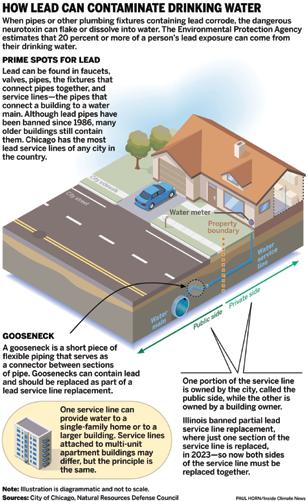

When the Bill Comes Due
Black America in the Shadow of the “One Big Beautiful Bill”
They called it beautiful.
They called it big.
But if you live in Chicago—or anywhere working-class Black families depend on food assistance, health care, and public investment—what passed this week in Washington is anything but.
The One Big Beautiful Bill Act, approved by a single-vote margin in the Senate, combines extended tax cuts for the wealthy with deep cuts to Medicaid, SNAP, and climate-focused job creation. Lawmakers are calling it an economic victory. But what it really is… is a blueprint for who’s worth saving.
This isn’t budget management. This is a policy manifesto—and Black communities were never its priority.
What the Bill Actually Does
The bill sprawls across sectors, but the intention is clear: redirect funding upward while stripping support away from working-class Americans.
Corporate & High-Income Tax Cuts: The centerpiece. Trillions locked in for top earners, developers, and corporations. Temporary pandemic-era worker benefits? Gone.
Medicaid Restrictions: Introduces new work requirements and tightens eligibility reviews. Could push millions off coverage over the next decade.
SNAP Cuts: Slashes nutrition assistance and raises administrative barriers. Even states with high need will lose flexibility.
Green Energy Rollbacks: Strips incentives for solar and wind. Coal and oil receive subsidies instead.
Increased Defense & Border Spending: Billions reallocated to military contractors and enforcement, with little oversight.
Deficit Increase: Despite being branded as “fiscally responsible,” this bill adds an estimated $3 to $5 trillion to the federal deficit.
It’s not just legislation—it’s a shift in national posture.
In Chicago, the Impact Won’t Be Delayed
While the bill is national, its consequences will land fast and hard in cities like Chicago.
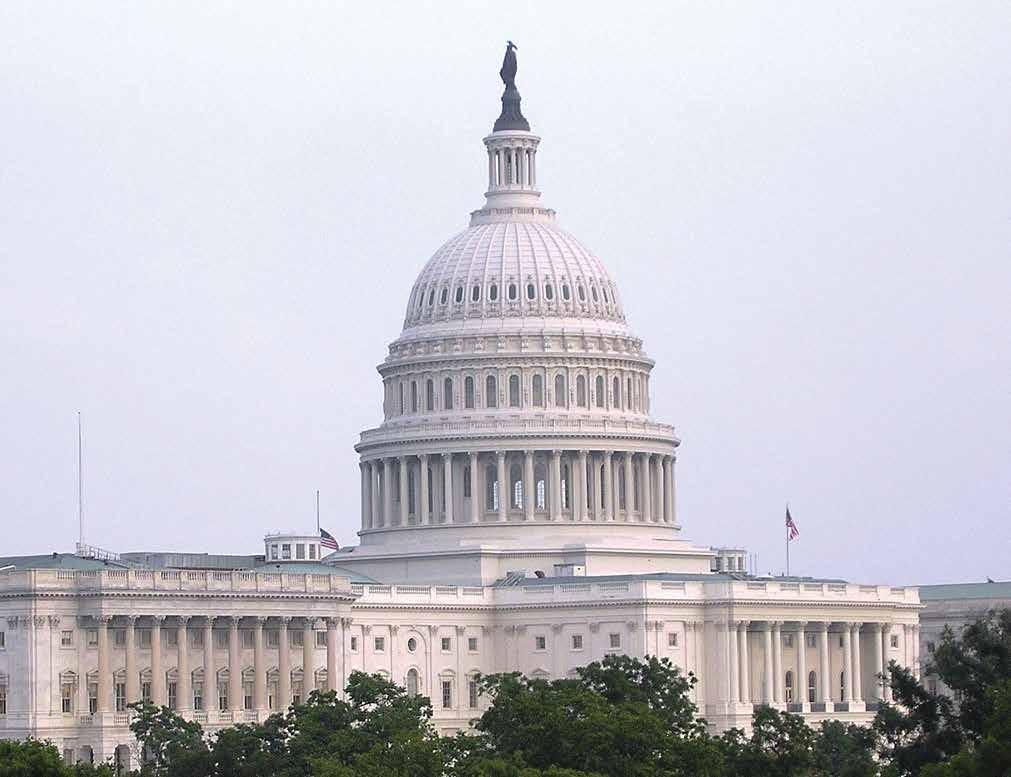
Health Care Losses: More than half a million people in Illinois could lose Medicaid or related ACA coverage. Many are Black, aging, or managing chronic illness.
Food Insecurity Spike: Over 200,000 Illinois residents could be removed from SNAP. Most community food banks are already at capacity.
Housing and Utility Pressure: The rollback of green energy funding means higher heating and cooling costs for residents who already can’t afford seasonal spikes.
Local Job Loss: Cuts to SNAP and Medicaid ripple through the workforce. From grocers to home health workers, Black employment takes a direct hit.
Environmental Setback: Neighborhoods historically targeted for industrial zoning will again be sacrificed—fewer clean energy jobs, more exposure to harmful emissions.
This isn’t a trickle-down policy—it’s a bottom-up erasure.
What This Says About the Country
The bill doesn’t just redistribute funding. It reveals who lawmakers believe
should struggle, and who deserves relief. It gives grace to billionaires. It gives excuses to polluters. It gives orders to the poor. And for Black families who’ve carried the weight of underfunded schools, shuttered clinics, unsafe housing, and state surveillance? It gives the same tired message: fend for yourselves.
There’s no room in this bill for grace— only punishment masquerading as policy.
What Needs to Happen Now
Illinois officials can’t undo this federal move, but they can blunt the damage. It’s not just about political response—it’s about survival strategy:
Hold the Line on Medicaid: Use state flexibility to preserve access.
Expand Emergency Food Access: Support pantries, mutual aid, and mobile food programs now.
Protect Green Energy Jobs Locally: City and state programs can prioritize renewable access even as federal funding dries up.
Voter Education: Make it clear which elected officials backed this bill, and
what they really cost their districts.
Grassroots Messaging: Forget the soundbites—start telling families the real-world impacts, plainly and early.
Final Word
The name doesn’t matter.
The rhetoric doesn’t matter.
The charts and floor speeches don’t matter.
What matters is this: a country looked at its working-class citizens—especially its Black citizens—and decided they were too expensive to keep investing in.
So the investment stopped.
And when the bill comes due, it won’t be the rich who pay it.
It’ll be the woman choosing between her insulin and her rent.
The elder waiting in a clinic that just lost its last federal grant.
The kid going to school hungry because SNAP ran out on the 22nd.
The One Big Beautiful Bill isn’t just ugly. It’s violent.
And if Chicago isn’t ready to organize, we better be ready to suffer.
healthy living
The Benefits of Body Contouring After Weight Loss
Those who are extremely obese and take the brave step toward life-changing weight loss—but don’t consult professionals who care about their well-being—may find themselves with yet another burden on their shoulders. Granted, every weight loss journey is different. But there’s one thing nearly everyone agrees on: it’s not easy.
For the majority of those who have faced that mountain and earned the reward of weight loss, there’s another truth—they’ll tell you the loss is just the beginning of a new climb. Whether your weight loss was achieved through gastric bypass, prescribed medication, or your own determination, the end result often includes excess skin. That is real.
This condition disproportionately affects people living in poverty, who may experience it more frequently than their wealthier counterparts.
What Is Body Contouring?
Quick, significant weight loss often causes the skin—which was once tight-fitting and stretched to its limits—to hang. This happens because the skin no longer has the elasticity to snap back into place. The resulting folds can cause discomfort, interfere with physical activity, and lead to rashes or infections. These skin folds can trap moisture and sweat, creating unpleasant odors and hygiene challenges. This condition is sometimes referred to as dermatitis neglecta, as the affected areas can be difficult to clean properly.
Body contouring addresses this issue through surgery that removes excess skin. The procedure typically happens in three stages, all performed under general anesthesia:
Belt lipectomy: The first stage removes loose skin and fat around the waist or “belt line.” The surgeon makes an incision around the lower back and abdomen to remove excess tissue, then sutures the area to smooth and flatten the stomach, lift the buttocks, and tighten the outer thighs.
Upper body lift (months later): This second stage removes excess skin from the upper arms (shoulder to elbow), upper back, and breasts. Women may choose to combine this with a breast lift, reduction, or implants.
Thigh lift (2–3 months later): Finally, the surgeon addresses excess skin on the inner thighs, making incisions along the inside of the legs.
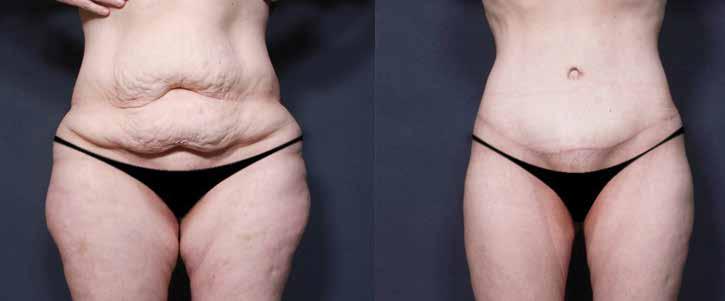
Scarring is an expected outcome of body contouring, but for many people who have undergone major weight loss, the procedure is essential in embracing their new bodies. Planning for this step early—ideally at the beginning of your weight loss journey—is key. And a journey it is.
It’s crucial to discuss your plans with a doctor familiar with the process and the physical and medical outcomes that may arise. Being informed about how your body may respond to the transformation you’re pursuing is essential to long-term success. Early consultation allows you to better prepare, know what to expect, and seek help when necessary. Many hospitals also offer support groups for patients on similar paths, which can provide guidance and community.
All of this contributes to achieving your ultimate goal: improved health and a physical appearance that can dramatically boost self-esteem.
Why Choose a Medical Hospital or Clinic for Body Contouring?
Your health is one of the most important aspects of life. Before entrusting your body to anyone, make sure your surgeon is board-certified in plastic and reconstructive surgery and highly experienced in complex body contouring cases.
Do your research. Know what procedures and technologies are currently in use. For example, if ultrasound-assisted liposuction (UAL) is brought up, ask whether the equipment is FDA-approved and commonly used. UAL uses ultrasonic waves to target fat cells more precisely. It can be especially effective
for patients who have previously had liposuction or who have fibrotic fat— but what if that’s not your situation? You need to know what’s right for your body—what you need, what you don’t, and when and why.
You only have one body. Take care of it—and work with a team of doctors who offer a continuum of care. That commitment and expertise can make all the difference in a successful body contouring journey.

Cover Story
What Xavier Ramey Refuses to Forget
Before he founded a design firm for justice, before he advised billion-dollar companies, and long before he became a sought-after speaker on equity and power, Xavier Ramey was a kid on the West Side of Chicago who spent most of his free time in the library. Not because anyone made him. Not because it looked good. But because books were where the world made sense to him.
“I was the outcast kid,” he says. “Nerdy, curious, always talking—usually about things no one else cared about yet.”
His father, Paul Ramey, was an organizer in the Henry Horner Projects, someone who knew how to move people without a mic. His mother knew everyone in the neighborhood. From them, Xavier absorbed two enduring truths: that real power lives in relationships, and that silence is a form of complicity. Those ideas would become the emotional architecture of Justice Informed, the company he built in his thirties to help organizations reckon with systemic inequity.
But Ramey’s journey to becoming a justice strategist wasn’t linear. It moved through grief, betrayal, academia, corporate boardrooms, and the lived complexity of Black manhood in America. It also moved through disappointment—both personal and professional—especially in the performative equity boom of 2020 and its post-2024 rapid retreat. He remembers one afternoon in middle school, huddled at the back of the Garfield Park branch library, reading about apartheid while kids outside practiced double dutch. He remembers trying to explain redlining to his classmates and getting blank stares. “I had a lot to say,” he recalls, “but not always a place to say it.”
“We don’t pitch,” he says. “We don’t sell. We invite people who already know the world is broken and want to work.”
That ethos, sharp and unapologetic, has made him a vital force in today’s justice movement. Ramey isn’t here to soften the blow. He’s here to identify and name the pain—and help rebuild what comes after.
West Side Foundations
Ramey grew up at the intersection of Chicago’s Garfield Park and Lawndale neighborhoods. It wasn’t an easy upbringing, but it was rich in culture, questions, and community.
“I spent most of my time reading. I de-
voured books the way a cactus takes in water,” he says. “They helped me speed up time. A book is what someone else already figured out.”
He credits his father with giving him his first real framework for leadership—”My father taught me: you can organize a protest, but can you organize a meal?”
That hunger for knowledge became his first form of resistance. In a city often defined by its segregation and struggle, Ramey was already asking: Why is it like this? Who benefits? Who pays?
His second-grade teacher, Ms. Whitfield, taught him the electric slide. It’s a memory that he recalls with warmth. It wasn’t just a dance. It was belonging—a soul-binding tie of unity signifying that everyone could move together.
“That class was one of the few places I felt seen,” he says. “I knew even then: I wasn’t meant to survive this place—I was meant to shape it.”
But school wasn’t always a sanctuary. He remembers being mocked for the way he spoke, for using vocabulary he picked up from books rather than the streets. “I got called ‘white’ for how I talked. Even in Evanston, which people think of as progressive,” he says.
Still, he held on to his voice—awkward, earnest, and insistent. The same voice that would later command conference rooms and keynote stages. In a generation coming of age with dual fluency in code-switching and consciousness, Ramey was ahead of the curve.
Before Justice Informed
Ramey didn’t begin his career in justice. He started in finance and nonprofits, navigating spaces that rarely centered equity but were constantly invoking it. He learned the language of philanthropy—and the limits of good intentions.
“People wanted transformation without discomfort. That doesn’t exist,” he says. “What they want is safety within the system. But safety is a future state. It isn’t guaranteed now.”
After earning degrees in economics and public policy, Ramey began to chart his own path. He noticed a troubling gap: organizations were obsessed with metrics but allergic to meaning. Diversity reports without relational work. Inclusion campaigns with no actual redistribution of power.
So he founded Justice Informed not as a DEI firm, but as a strategy and design
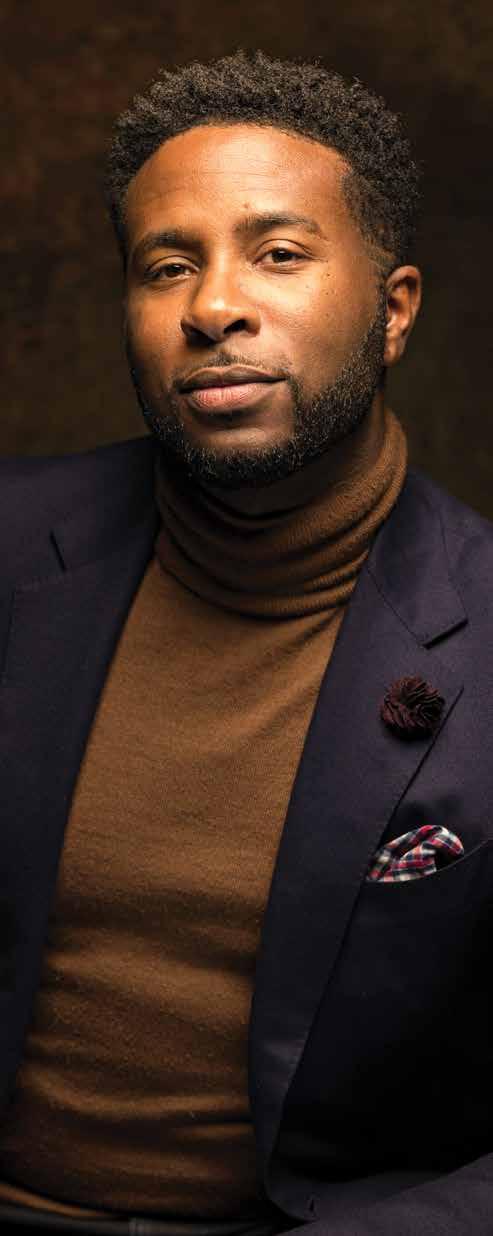
company for equity. “We are a firm that looks at how relationships function inside institutions,” he explains. “And then we ask: What would this look like if it were built for equity from the start?”
He refers to it as an invitation-based model: people aren’t persuaded to care—they’re welcomed into the work only once they do. “My cousins in Chatham aren’t getting a job at Meta just because we updated the website’s stock photos,” he says. “This is about power, not palette swaps.”
The DEI Mirage
Ramey has sharp words for the post2020 corporate rush into DEI. He calls it “the performative era”—an influx of jobs, initiatives, and funding that often lacked substance.
“We had folks with 14-hour certificates calling themselves experts,” he says.
“People jumping into DEI work who didn’t want to do corporate work around white people. It was a house of cards.”
He’s equally critical of the logic behind it.
“There’s no business case for raising your kids. So why does equity need one?” he asks. “That was the whole premise after 2014—this Harvard Business Review white paper saying diversity makes you more money. I call that an arrogantly disrespectful foundation to build humanity on.”
Instead, Ramey advocates for what he calls a justice-informed model. One rooted in accountability, not optics. Relationships, not transactions. Repair, not rebranding.
“Equity is divisive because it demands an answer: Are you in relationship with the people harmed?” he says. “If not, you won’t do the work.”
“Racial change cannot move at the pace of white fragility,” he adds. “Black people’s ambition for equality has already outpaced white America’s imagination.”
Erased and Still Here
In the years after George Floyd’s murder, Ramey’s firm was in high demand. He led equity audits, coached C-suite executives, and helped shape large-scale public and private policy shifts. Then, slowly, the calls stopped. His name vanished from websites. Companies returned to the safe language of inclusion over impact.
“It felt like betrayal. But I had already counted the cost,” he says. “The erasure is never loud. It’s administrative. One week your name is on a slide. The next, it’s not.”
He describes this moment not as a crisis, but a revelation.
“The value proposition of my work isn’t business. It’s ministerial,” he says. “I’m
trying to change people’s hearts. Tragedy is a hurricane. What we’re facing—poverty, homicide, racial violence—is not tragedy. It’s a design. And I run a design firm.”
An enemy, he says, is easier than a traitor. “Because a traitor had a relationship with you.”
What They Get Wrong
Some people, he says, assume he wants to burn everything down.
“It’s a failure of imagination,” he says. “Some things need to be pruned. Others need to die. But that’s not destruction— it’s design.”
He uses a fitness metaphor. If you want to get in shape, you change your diet. That’s not violence. That’s discipline.
“Help feels like pain,” he says. “But if your goal is change, you have no right to comfort. Your safety isn’t in the current. It’s in the next.”
This is not about punishment. It’s about integrity. And it demands more than statements or sponsorships—it demands structural courage.
The
New Model
Justice Informed today looks different than it did in 2020. Ramey calls it Version 3.0. The firm is leaner, more selective, and more honest about who it works with.
“We don’t convince people. We partner with those who already believe the work matters,” he says. “And that, in itself, rebukes the myth that nobody wants this.”
He speaks in rhythms—part preacher, part strategist, part philosopher. He dissects capitalism, calls out false allies, and still ends the conversation with grace.
Asked if he sees himself as an activist, he shakes his head.
“I don’t like the word,” he says. “Too many people use it without doing the work. I’m a strategist. A speaker. More and more, I think I’m a minister.”
And what is he ministering?
“Hope with teeth,” he says. “Hope that comes with a cost.”
The Future, If We Want It
Ramey doesn’t believe in false hope. But he does believe in people—at least the ones who are ready.
He still travels the country, still speaks to CEOs, still asks the question that launched his entire enterprise:
Are you in a relationship with the people you say you want to help?
If the answer is yes, he’ll help you redesign your institution from the ground up. If the answer is no, he’ll walk away.
Because Xavier Ramey doesn’t chase the work. He builds it—carefully, urgently, and always in relationship.
Because he knows what happens when a generation forgets to read, to listen, to be brave enough to change.
And he refuses to let that be our legacy.
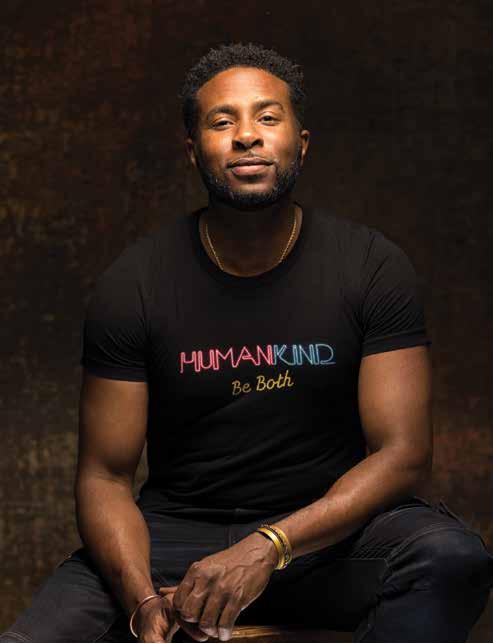
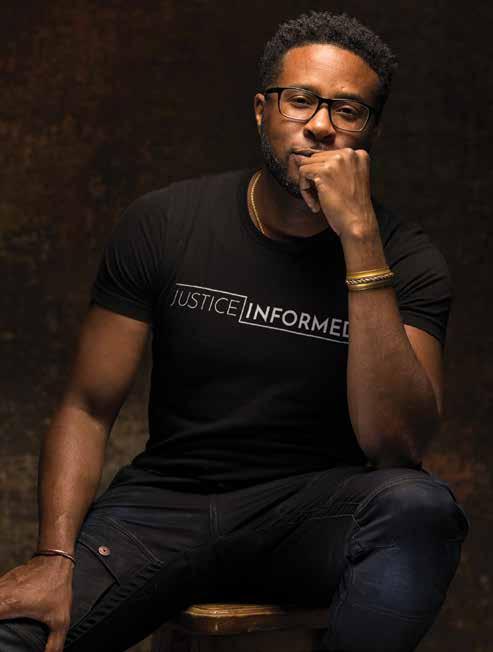
Art & Soul: Growth and Transparency Center Stage
On Friday, June 27th,
Art & Soul: Volume 3 – The Art of Life took place at Chicago News Weekly, bringing together community, culture, and creativity in a deeply moving and reflective evening.
Curated by Kenard Karter and presented by Culture + Collabs, the event featured a powerful live conversation and Q&A with committed couple and art collectors Nicole Spicer and her husband, exploring themes of life, parenting, marriage, growth, and purpose.
Through honest storytelling and open dialogue, the couple offered insight into their personal journey—creating space for connection, healing, and reflection. A live painting by @ justfloart added a visual dimension to the experience, capturing the essence of the night as a symbolic moment in time.
This edition of Art & Soul highlighted the intersection of art and lived experience, making it not just an event, but a meaningful expression of life itself.

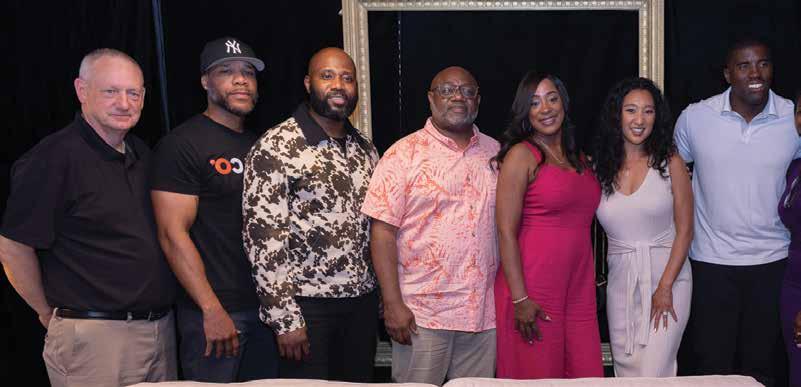

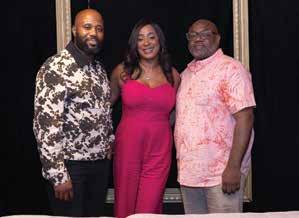
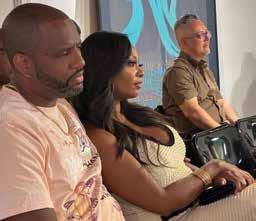
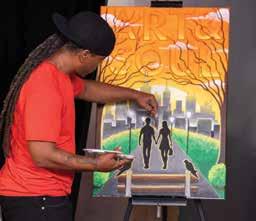
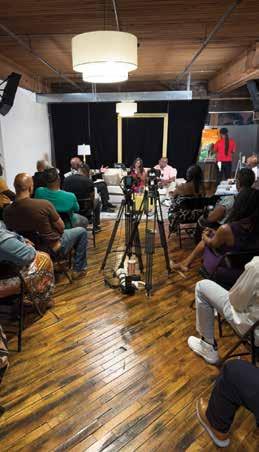
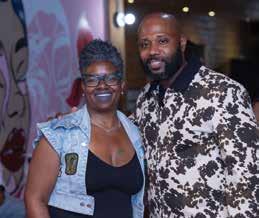


Toni Preckwinkle’s Summer Reception
Cook County Board
President Toni Preckwinkle hosted a summer reception at the Alhambra Palace in Chicago’s Fulton Market. Supporters of President Preckwinkle were treated to delicious Mediterranean dishes and fantastic live music. The fundraiser, hosted by Preckwinkle for President.
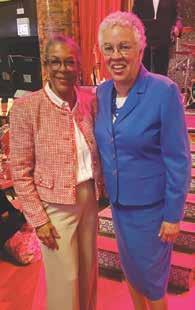

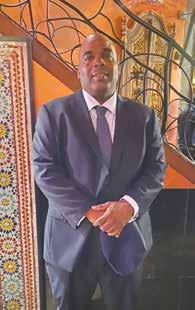
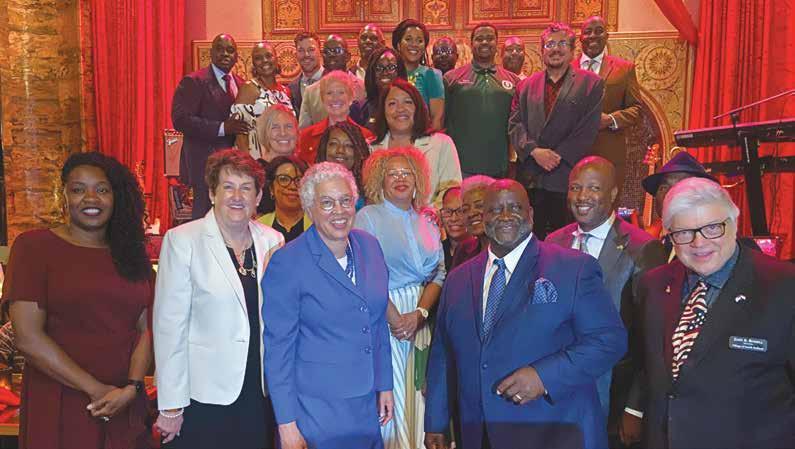
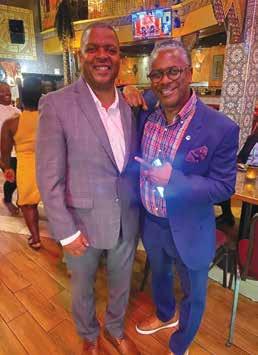
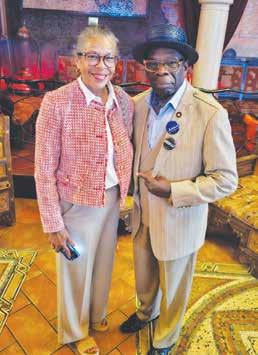
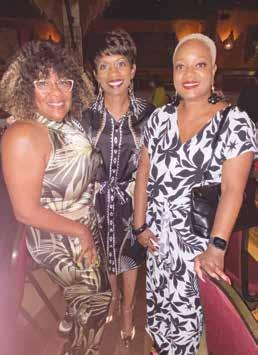
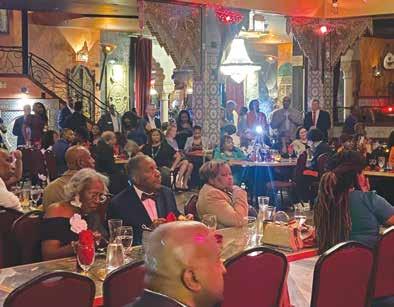
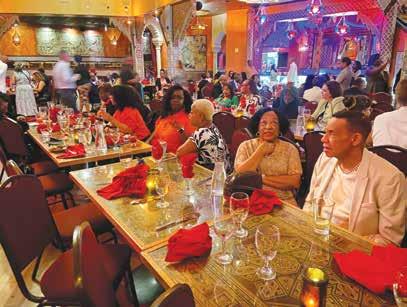
ARTS & CULTURE
Kai EL’ Zabar Editor-In-Chief
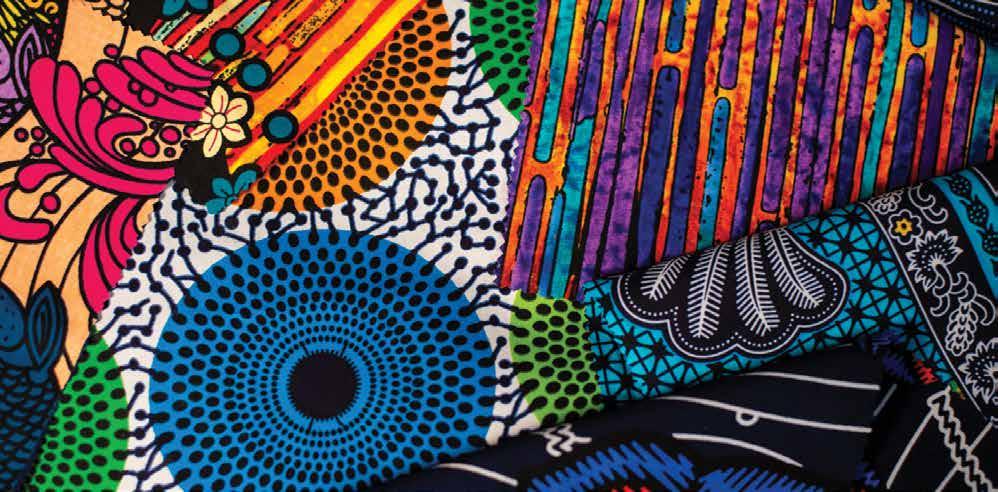
Africa Fashion A Vibrant Celebration of Style and Heritage
Chicago’s Field Museum is currently hosting a remarkable dual exhibition—“Africa Fashion” and “Connecting Threads: Africa Fashion in Chicago”— offering an unparalleled look into the dynamic world of African design. Presented together under one roof, these exhibitions are a must-see for anyone interested in the intersection of culture, art, and fashion. Especially during the summer months, the vibrant designs resonate powerfully with the season’s energy and warmth.
Africa Fashion: Global Impact, Iconic Voices
The “Africa Fashion” exhibition is a groundbreaking showcase featuring over 180 works that underscore Africa’s profound influence on global style. Visitors will encounter a diverse collection span-

ning haute couture, ready-to-wear, and multimedia displays. The exhibit traces the evolution of African fashion from pioneering figures like Shade Thomas-Fahm to contemporary innovators such as Thebe Magugu, highlighting bold designs that masterfully blend tradition with cutting-edge creativity. This comprehensive collection includes photographs, literature, sketches, music, film, catwalk footage, textiles, and jewelry, offering a truly immersive experience into the continent’s rich sartorial landscape.
Connecting Threads: Chicago’s African-Inspired Creativity
Complementing “Africa Fashion” is “Connecting Threads: Africa Fashion in Chicago,” an exhibition that celebrates
the local impact of African-inspired design. Here, Chicago-based designers honor their heritage and communities by creating stunning garments, jewelry, and textiles.
Inspired by items from the Field Museum’s collections and Chicago’s vibrant African design scene, the exhibit features talented artists like Olivia Ogbara, Stephane St. Jaymes, Hayet Rida, and Jennifer Akese-Burney. It delves into fashion as a powerful medium for storytelling and cultural expression, set within thematic environments inspired by Chicago’s skyline and enhanced by Robert Earl Page’s custom patterns.
Visitors can also engage with interactive programming, including panel discussions and collaborations with Black Fashion Week USA.
Experience the Exhibitions Now
Both exhibitions offer a unique opportunity to explore the global and local narratives of African fashion. While they run through March 1, 2026, experiencing them during the summer is highly recommended. The designs—often born from the vibrant energy and warmth of the African sun—truly come alive in the summer light, allowing for a deeper appreciation of their intricate details and cultural significance.
Don’t miss this chance to witness the transformative power of African style and discover how these dynamic voices are shaping the future of fashion.
Laura Miller Managing Editor
LOVE & RELATIONSHIPS
Five Ways to Keep Your Relationship Steamy
When It’s Hot Outside, the Mortgage Is Due, and Inflation Is Real
Iremember being under 18, flipping through Mademoiselle and Cosmo like I was unlocking ancient secrets of womanhood.
They’d promise things like “5 Ways to Spice Up Your Relationship,” and I just knew those writers secretly understood their audience was me—a teenager with Bonne Bell lip gloss and a dream. “Wear flavored chapstick,” they’d say, and I believed it was the key to adult intimacy. Well, I’ve been a grown-up for a while now. I can’t tell you the last time I wore anything flavored on my lips, and these days, “spicy” looks a lot more like someone handling bedtime or bringing home the right brand of almond milk. Romance doesn’t go away—it just changes form. So, in honor of those glossy magazine promises, here are five ways to keep things steamy even when you’re juggling full-time work, the summer heat, the kids’ schedules, and an economy that’s out here wildin’.
1. Netflix and Chill (Literally—Please Turn On the A/C)
Gone are the days of “Netflix and chill” meaning anything other than collapsing into a heap with snacks and streaming. But with intention, this old favorite still delivers. Pick a series neither of you have seen. Make a rule: no scrolling during the show. Maybe even light a candle or, you know, dim the lights. Bonus points if you share a bowl of popcorn and let your feet touch. That’s foreplay when you’ve both been up since 6 a.m.
2. Take a Walk Together (Without the Kids, the Dog, or Errands)
This isn’t about burning calories. This is about the magic

that happens when you both leave your phones at home (or at least in your pocket) and take a slow, sweaty, slightly resentful walk together after dinner. Complain about the heat. Gossip about the neighborhood. Remind each other who you are outside of bills and bedtime routines. Maybe hold hands. Maybe sweat too much to hold hands. Both are valid.
3.
Review
Your Budget
(Yes, Really—It Can Be Hot)
Stay with me. Sitting down with a cold drink and your budget doesn’t sound sexy, but there’s something wildly intimate about facing your reality together. Make a list of shared goals: a weekend trip, a new mattress, takeout twice a week instead of once. Dreaming together—even within constraints—is a major turn-on. Financial intimacy is intimacy. Add a spreadsheet and subtract some stress.
4. Plan a Vacation (Fantasy or Real, It Works)
Planning is foreplay. Book something if you can—nothing fancy, maybe just one night at a place with blackout curtains and no small people demanding snacks. If a real trip isn’t on the table, plan a fantasy one. Build a Pinterest board. Send each other hotel options. Pretend you’re going to Italy. Or Costco. The point is: put your heads in a future where it’s just the two of you, well-rested and glowing.
5. Have a Nap Date (The New Secret Rendezvous)
Here’s the move: one of you texts the other and says, “Call off. I already did.” You meet at home in the middle of a weekday. You put your phones on
Do Not Disturb. You get in your comfiest clothes (or nothing at all—but let’s be real, probably sweatshorts and a tank top). You crawl into bed, throw on a documentary narrated by David Attenborough, and you nap. That’s it. Not “fall asleep watching TV together.” An intentional nap. Together. In daylight. This is what grown-up love looks like. And yes, it’s hot. Relationships in adulthood aren’t about big romantic gestures. They’re built on quiet moments, shared snacks, financial spreadsheets, and the sacred silence between two people who both just want to not be needed for one whole hour.
Spice doesn’t come in a lip gloss tube anymore—it shows up in the ways we show up for each other. Even (especially) when the world is on fire.

Secrets Were Public. The Silence Was Ours.
They always said it wasn’t our business.
What happened behind closed doors. What went down in hotel rooms, music studios, backstages. What women whispered. What court filings described. What bruises confirmed.
We were told to protect the legacy.
But legacy was never the thing at risk. What’s been at risk—what’s always been at risk—are the lives, safety, and credibility of Black women.
Now, with Sean “Diddy” Combs recently acquitted in a federal trial, the question isn’t just what happens in courtrooms. It’s what happens in communities, in pressrooms, in families, in fanbases. Because Combs isn’t the beginning—and he certainly won’t be the end.
This story is bigger than him. The names are different, but the system is the same.
Case File 01:
Dr. Dre and the Silencing of Dee Barnes Incident: 1991 | Outcome: Admitted assault, no career impact
Dr. Dre physically assaulted TV host and hip-hop journalist Dee Barnes at a Hollywood party in 1991. According to Barnes, Dre slammed her head against a wall, kicked her in the ribs, and attempted to throw her down a flight of stairs. The attack was retaliation for an episode of Pump It Up! that Dre felt made him and N.W.A. look bad.
He later told Rolling Stone: “I just threw her through a door.” He was never convicted. Barnes sued. They settled out of court. Meanwhile, Dre’s career flourished—from Death Row to Beats by Dre to Apple. Barnes was quietly removed from the industry.
Case File 02:
James Brown—Abuse Disguised as Genius
Incidents: 1988–2004 | Outcome: Multiple arrests, zero long-term fallout
James Brown was arrested on domestic violence charges at least four times. His third wife, Adrienne Brown, accused him of beatings so severe she required medical care. Police once found her bloodied and hiding in a closet.
In 2004, Brown was arrested again for shoving another partner to the floor during an argument. His legal team often downplayed the charges. The public did too.
Brown died a beloved figure. The abuse was reframed as “eccentricity.” His victims were reduced to anecdote.

Case File 03:
Floyd Mayweather—Unbeaten, Unaccountable
Incidents: 2001–2010 | Outcome: Multiple convictions, continued acclaim Mayweather has been accused of violence by at least five women. In 2002 and 2004, he was convicted of domestic violence. In 2010, he served two months in jail after assaulting Josie Harris, the mother of his children. His son, then ten, testified that he saw Floyd punching her and threatening to kill her.
Mayweather denied wrongdoing, and continued to headline billion-dollar fights. The media dubbed him “Money Mayweather,” not a domestic abuser. Josie Harris died in 2020. Her civil case against him was dropped posthumously.
Case File 04:
Chris Brown and the Rihanna Assault Incident: 2009 | Outcome: Felony plea, rapid comeback
Photos showed Rihanna’s face—swollen, bloodied, bitten. Chris Brown pleaded guilty to felony assault and was sentenced to five years of probation.
But the cultural response was split. Rihanna was blamed for provoking him. Brown’s fans defended him fiercely. Some still do.
He’s since been accused of additional violent outbursts—including throwing furniture out of a window, threatening tour crew, and hitting another woman. Still, he tours internationally and remains signed to major labels.
Case File 05:
Tory Lanez and the Shooting of Megan Thee Stallion
Incidents: 2015–2023 | Outcome: Convicted of felony assault with a semiautomatic firearm
Before the shooting, Lanez’s former partner accused him of harassment and physical abuse. That allegation was barely covered.
In July 2020, after a party in L.A., Lanez shot Megan Thee Stallion in the feet. She initially didn’t name him—fearing police escalation—but later came forward. The backlash was immediate and severe. Memes, jokes, skepticism.
Megan provided medical records and police reports. Lanez released a diss album calling her a liar. In December 2022, he was convicted. He is currently serving a 10-year sentence. Megan continues to face harassment online for telling the truth.
Case File 06:
Diddy’s Decades of Control—and the Limits of the Law
Incidents: 1990s–2023 | Outcome: Acquitted of federal criminal charges; civil suits settled or dismissed
Cassie Ventura’s 2023 lawsuit forced the entertainment world to confront what had been whispered for decades: Sean “Diddy” Combs built more than a music empire—he allegedly built a system of control.
Her filing described rape, beatings, coerced sex with third parties, drugging, surveillance, and years of psychological abuse. Within 24 hours, the case was settled out of court. No admission of guilt. No retraction of claims.
Then came the footage. In 2024, CNN released a hotel surveillance video from 2016 showing Combs violently assaulting Ventura in a Los Angeles hotel hallway. The video showed her being thrown to the floor, kicked, and chased barefoot. It corroborated what she said happened.
More women came forward, echoing similar patterns. Some claims dated back decades. Some involved minors at the time of alleged abuse.
Yet in court, the federal criminal case did not stick. Combs was recently acquitted of the most serious charges, leaving many asking whether justice failed— or whether justice, in this country, was ever designed for survivors at all.
What remains is a pattern: of fear, silence, and systemic protection. And even now, Combs is defended in some circles as a symbol of success under siege—despite the video, despite the testimony, despite the trail of women who say otherwise.
The public record is closed. The cultural reckoning is not.
Case File 07:
R. Kelly—Built Here, Protected Here Incidents: 1994–2019 | Outcome: Convicted on federal racketeering and sex trafficking charges
He married 15-year-old Aaliyah. He was filmed abusing a minor. Dozens of
survivors—many Black girls from the South and West Sides—came forward. And for decades, Chicago looked the other way.
Kelly’s presence was felt everywhere: block parties, local radio, church events. The girls who spoke up were vilified, disbelieved, or ignored. Some were his fans. Some were just girls in his orbit. All were failed by the systems around them. He is now serving 30 years in federal prison. But the cost of believing him for so long is still unpaid.
The System, Exposed
This isn’t about isolated acts. It’s about infrastructure:
Executives who signed checks and kept secrets
Fans who prioritized nostalgia Journalists who softened language Communities that chose silence over truth
And it’s always Black women at the center of the storm—expected to carry the weight, expected to forgive, expected to survive without disrupting anything.
The Home Team Protected Him First
R. Kelly didn’t just happen in Chicago. He was protected by Chicago. By promoters who knew. By mentors who ignored. By audiences who refused to interrogate their nostalgia. The girls came forward, and we called them fast, confused, or jealous. We chose the music over the truth.
Now, with Diddy’s trial concluded and others still emerging, Chicago has another opportunity to respond differently. The reckoning isn’t just about who we cancel. It’s about who we listen to, and who we keep safe.
Because every time we say, “It’s not our place to judge,” we are judging. We are judging Black women unworthy of safety.
We are saying the culture matters more than their bodies.
We are calling silence loyalty—when in truth, it’s complicity.
Final Word
This article doesn’t ask for guilt. It demands acknowledgment. That legacy without accountability is a lie. That silence doesn’t protect—it permits.
That if we’re serious about protecting Black women, we need to start showing it. In real time. On every platform. In every room.
Because the trial might be over. But the truth is still on the record. And this culture? Still on the stand.
If you describe someone as “woke” today, you may find yourself embroiled in a heated discussion, largely due to how the term is interpreted across lines of race, ethnicity, and the intelligence levels of those with whom you are conversing.
The following list of words may help you better articulate yourself, should you choose to do so.
Definitions
Woke
Originally Black American slang, “woke” referred to being awake to social injustices, particularly around race. It now broadly means being socially and politically aware, especially
of systemic oppression.
Note: In recent years, it has been politicized and used both sincerely and pejoratively, depending on context.
Informed
Having or showing knowledge gained by research, study, or experience. An informed person is aware of current events, issues, or specific subject matter.
More general and fact-based.
Literate
Traditionally refers to the ability to read and write, but in modern use also implies competence or knowledge in a particular area, such as “media literate” or “financially literate.”
Knowledgeable
Having a deep and broad understanding of facts, subjects, or information. Implies accumulated learning or expertise.
Often comes from study, experience, or both.
Enlightened
Spiritually or intellectually awakened; having greater understanding, particularly in terms of moral, philosophical, or social truths.
Suggests a higher level of awareness or wisdom.
Astute
Perceptive and sharp in judgment or insight, especially in practical or strategic matters. An astute person can read
situations well and respond intelligently.
Interconnection
All these words describe a state of awareness, understanding, or perceptiveness, but from slightly different angles:
- Woke often centers on social justice and systemic issues.
- Informed and knowledgeable emphasize education, research, and facts.
- Literate suggests fluency or competency in navigating a particular field.
- Enlightened reaches into philosophical, moral, or even spiritual dimensions.
- Astute highlights strategic insight and real-world savvy.
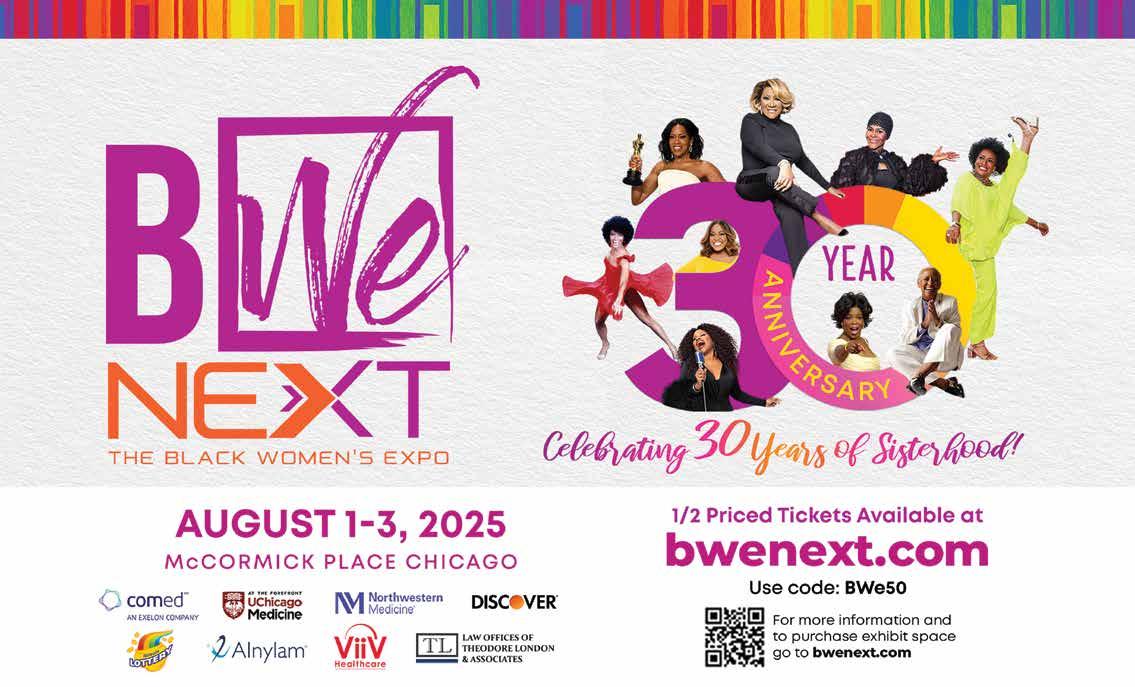
Food & Wine Mare
How to Make Potato Salad Black Folks’ Style
A Soul Food Staple That Brings the Family Together
When it comes to cookouts, church gatherings, or Sunday dinners, one dish you’re guaranteed to see on the table is potato salad — and not just any kind. We’re talking about Black folks’ potato salad: creamy, tangy, a little sweet, with a soulful flavor that hits just right.
Passed down through generations, this recipe isn’t just about ingredients — it’s about love, culture, and the pride that comes from getting it just right. Here’s how to make it like Auntie or Big Mama would want you to.
Tips from the Culture
Don’t get fancy with it. No raisins. No bacon bits. This ain’t that kind of party. Texture matters. Some folks mash their potatoes slightly; others leave them chunky. Aim for a creamy bite with a little body.
Mayo-mustard balance is key. Too much mustard, and it’s sharp. Too much mayo, and it’s bland. Find your family’s sweet spot.
Taste as you go. You’ll know it’s right when it reminds you of childhood cookouts and aunties dancing by the grill.
Final
Word

Black folks’ potato salad isn’t just food — it’s legacy. It’s the taste of holidays, birthdays, repasts, and reunions. It’s laughter echoing across the porch and kids running through sprinklers. It’s respect. And once you master this
Ingredients
For the Salad:
5–6 medium russet potatoes (peeled and diced)
4 boiled eggs (chopped)
1 small yellow onion (finely diced)
2 celery stalks (finely diced)
½ green bell pepper (optional, finely diced)
½ cup sweet pickle relish (or chopped sweet pickles) Paprika (for garnish)
For the Dressing:
1 cup real mayonnaise (Duke’s or Hellmann’s preferred)
2 tablespoons yellow mustard
1 tablespoon sugar (to balance the tang)
Salt and black pepper (to taste)
Optional: a splash of pickle juice or apple cider vinegar for extra zip
Instructions
1. Boil the potatoes. Place diced potatoes in a large pot, cover with cold water, and
version, you’ll never show up to a cookout empty-handed again — and people will ask, “Who made the potato salad?”
add a generous pinch of salt. Bring to a boil and cook until fork-tender, about 10–12 minutes. Don’t overcook — you want them tender, not mushy. Drain and let cool slightly.
2. Boil the eggs. While the potatoes cook, boil your eggs. Once done, peel and chop them. (Pro tip: Set aside one egg to slice and lay on top as decoration.)
Make it with care. Make it with love. And most importantly, make it with soul.
3. Mix the dressing.
In a bowl, whisk together the mayo, mustard, sugar, salt, and black pepper. Add a splash of pickle juice if you like it extra tangy.
4. Build the salad.
In a large bowl, combine the potatoes, chopped eggs, diced onion, celery, bell pepper (if using), and relish. Pour in the dressing and gently fold everything together. Taste and adjust the seasoning — some folks like a little more mus-
tard, others want more relish or mayo. You do you — that’s the Black way.
5. Chill.
Cover and refrigerate for at least 2 hours (overnight is better). The flavors need time to marry and become one.
6. Garnish and serve. Before serving, slice that reserved boiled egg on top and sprinkle with paprika. Maybe a little green onion if you’re feeling fancy.
C.L. Blackburn Contributing Writer
Summertime and the Living Is Easy
Amaxi dress is the ultimate summer essential, offering effortless style for any occasion. Whether you’re heading to a casual picnic, a formal beach wedding, or a chic rooftop soirée, its versatile, leg-covering length has you covered. The inherent glamour and ease of a floor-skimming dress make any outdoor event feel instantly sophisticated. Plus, many maxi dresses double as perfect cover-ups, seamlessly transitioning from a beach day to aperitivo hour on your next getaway.
When searching for your go-to maxi dress, prioritize versatility. Look for styles that can easily be dressed up or down with your favorite sneakers, ballet flats, or sandals.
For everyday flowy options, consider reliable labels like Dôen, Leset, and Matteau. They offer a variety of styles, colors, and prints to choose from. If you need a stylish option for a wedding, J.Crew or Cara Cara have festive florals perfect for a garden celebration, while Toteme’s draped butter-yellow dress is a sophisticated choice for a city affair.
To help you find the best summer maxi dresses, here are some top picks, according to Vogue: If You Flow with Vogue’s Top Summer Maxi Dress Picks, You Can’t Go Wrong Ready to find your perfect summer maxi dress?




Matthau tiered floral print maxi $520
ESSE Studios blue strapless maxi $880
Dôen Ischia shirred floral-print dress, $350

THE STAY READY PLAYBOOK HE
